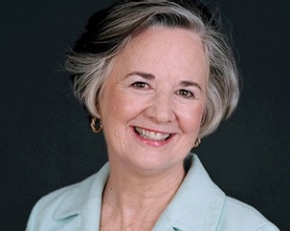“The important question is, what is the real experience of our graduates and how are we using that information to both improve our research portfolios and our programs?” asks Stewart, who is coming to Concordia on April 8 as part of the Future of the University and the Future of Learning speaker series.
We spoke with her in advance of her presentation, “What’s a future-ready model of graduate education?”
What are two or three trends in graduate enrolment patterns that you think Canadian universities should pay attention to?
Debra Stewart: In North America, there are two dominant realities that will drive enrolment trends going forward. The first is demographics (who is attending graduate school) and the second is technology (how graduate education will be delivered).
Historically, North American universities have been highly competitive for international students, largely due to three features. First, we speak English – the language of science, engineering and much intellectual exchange globally. Second, both Canada and the United States are democracies – an environment where strong universities have the kind of freedom associated with open exploration of ideas — essential for universities to thrive. Third, both countries have a large number of strong universities with high-quality programs.
Those three advantages have really driven the attraction of international students to North American universities. But the first two features are shifting. English is becoming less of an advantage because English-language graduate courses are being offered in every advanced country of the world.
Increasingly, even in undemocratic countries, there is an understanding that independence of research and autonomy for faculty in their research endeavours are prerequisites for achieving globally competitive universities. In many countries, there is an increase in democratization of universities even if the larger society is not moving towards a democracy.
On the third area of competitive advantage, North American universities will continue to have very high-quality graduate education programs. But it is worth noting that graduate education is also developing globally.
In fact, for the last five years, Europe and China’s production of PhDs in science and engineering has surpassed that of the United States. These global developments will affect our enrolment in two ways. First, it will be increasingly attractive for students to stay home for graduate study in countries where governments are investing in building their graduate programs. China would be a good example of this.
Second, countries around the world that have well-developed graduate education programs are now recruiting in those parts of the world historically that have supplied a large number of students to graduate schools in North America (in particular China and India).
When you put these two developments together, there is simply no guarantee that international students will forever be attracted to North America in the numbers that have flowed to our universities in the past.
The second factor impacting graduate patterns is technology. The transformation in online learning over the last 20 years, especially in the last 10 years, has amplified, and we have seen a huge expansion in master’s education. Where a BA used to be the degree of entry, it is now a master’s degree in many fields. This has been enabled in part by technology.
If you were leading a graduate school that was in the midst of a transformation from 'good to great,' where would you focus most attention?
DS: The graduate schools that are moving from good to great are ensuring they have broad faculty investment and engagement in both in producing strong research and in effectively mentoring of students. That is a bottom line requirement.
In addition, great graduate education universities in the future will attend to three things:
- having in place a comprehensive system to track career outcomes for graduates
- using feedback from career-outcome databases to improve programs
- ensuring that your curricula are sensitive to the needs to produce globally competent graduates (things we would associate with global competence include intercultural sensitivity, the ability to work across different populations and a deep respect for other cultures).
Join us for Debra Stewart’s presentation, “What’s a future-ready model of graduate education?” on April 8 in Room MB-2.435 from noon to 1 p.m.
On April 10, Iain Klugman, CEO and president of Communitech, comes to Concordia and will reflect on the question, “How can universities foster start-ups that help solve global challenges?”
 President emerita and senior scholar with the Council of Graduate Schools, Debra Stewart.
President emerita and senior scholar with the Council of Graduate Schools, Debra Stewart.